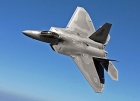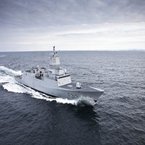El Savior
Posts: 337
Joined: 7/31/2003
From: Finland
Status: offline

|
Maybe I get this finally released:

Whiskey on the Rocks
http://en.wikipedia.org/wiki/Soviet_submarine_S-363
In October 1981, the Soviet submarine S-363 accidentally hit an underwater rock about 2 km from the main Swedish naval base at Karlskrona, surfacing within Swedish waters. The boat's presence coincided with a Swedish naval exercise, testing new equipment, in the area during the same days. Swedish naval forces reacted to the breach of neutrality by sending an unarmed naval officer aboard the boat to meet the captain and demand an explanation. The captain initially claimed that simultaneous failures of navigational equipment had caused the boat to get lost (despite the fact that the boat had already somehow navigated through a treacherous series of rocks, straits, and islands to get so close to the naval base). The Soviet navy would later issue a conflicting statement claiming that the boat had been forced into Swedish waters due to severe distress, although the boat had never sent a distress signal, but rather, attempted to escape.
The Soviet Navy sent a rescue task force to the site in Sweden, commanded by Vice-Admiral Aleksky Kalinin[3] on board the destroyer Obraztsovy; the rest of the fleet was composed of a Kotlin-class destroyer, two Nanuchka-class corvettes and a Riga-class frigate. Sweden's centre-right government at the time was determined to safeguard Sweden's territorial integrity. As the Soviet recovery fleet appeared off the coast on the first day, a fixed coastal artillery battery locked onto the ships, indicating to the Soviets that there were active coastal batteries on the islands. The fleet did not turn immediately and as they came closer to the 12-mile (19 km) territorial limit the battery was ordered to go into war mode on its targeting radar, turning it from a single frequency mode to a frequency-hopping mode. The Soviet fleet reacted almost immediately and all vessels except a heavy tugboat turned and stayed in international waters. Swedish torpedo boats confronted the tugboat, which left as well.
As the Soviet captain was being interrogated, the weather turned bad and the Soviet submarine sent a distress call. In Swedish radar control centers, the storm interfered with the radar image. Soviet jamming could also have been a factor. As the Soviet submarine sent its distress call, two ships coming from the direction of the nearby Soviet armada were detected passing the 12-mile (19 km) limit headed for Karlskrona.
This produced the most dangerous period of the crisis and is the time where the Swedish Prime Minister Thorbjörn Fälldin gave his order to "Hold the border" to the Supreme Commander of the Swedish Armed Forces. The coastal battery, now fully manned as well as the mobile coastal artillery guns and mine stations, went to "Action Stations". The Swedish Air Force scrambled strike aircraft armed with modern anti-ship missiles and reconnaissance aircraft knowing that the weather did not allow rescue helicopters to fly in the event of an engagement. After a tense 30 minutes, Swedish Fast Attack Craft met the ships and identified them as West German grain carriers.
The boat was stuck on the rock for nearly 10 days. Finally on November 5 it was hauled off the rocks by Swedish tugs and escorted to international waters where it was handed over to the Soviet fleet.

This is WHAT IF-scenario. Soviet did send military task force with tugs, but turned their military ships around just 12 nm from Swedish naval border. Sweden had orders to open fire if Soviet ships cross the border. What IF Soviet hadnt turn round and Sweden had opened fire on Soviet ships.
Scenario is almost done. Little more testing and tweaking. It should be fast tempo air and naval war Sweden vs. Soviet Union during the 1981 Cold War. Oh, Whiskey-class submarine was carrying NUCLEAR torpedoes and had orders to launch torpedoes if Sweden Marines try to board the ship.
< Message edited by El Savior -- 12/5/2013 8:12:29 AM >
_____________________________
El Savior
|
 Printable Version
Printable Version


















 New Messages
New Messages No New Messages
No New Messages Hot Topic w/ New Messages
Hot Topic w/ New Messages Hot Topic w/o New Messages
Hot Topic w/o New Messages Locked w/ New Messages
Locked w/ New Messages Locked w/o New Messages
Locked w/o New Messages Post New Thread
Post New Thread